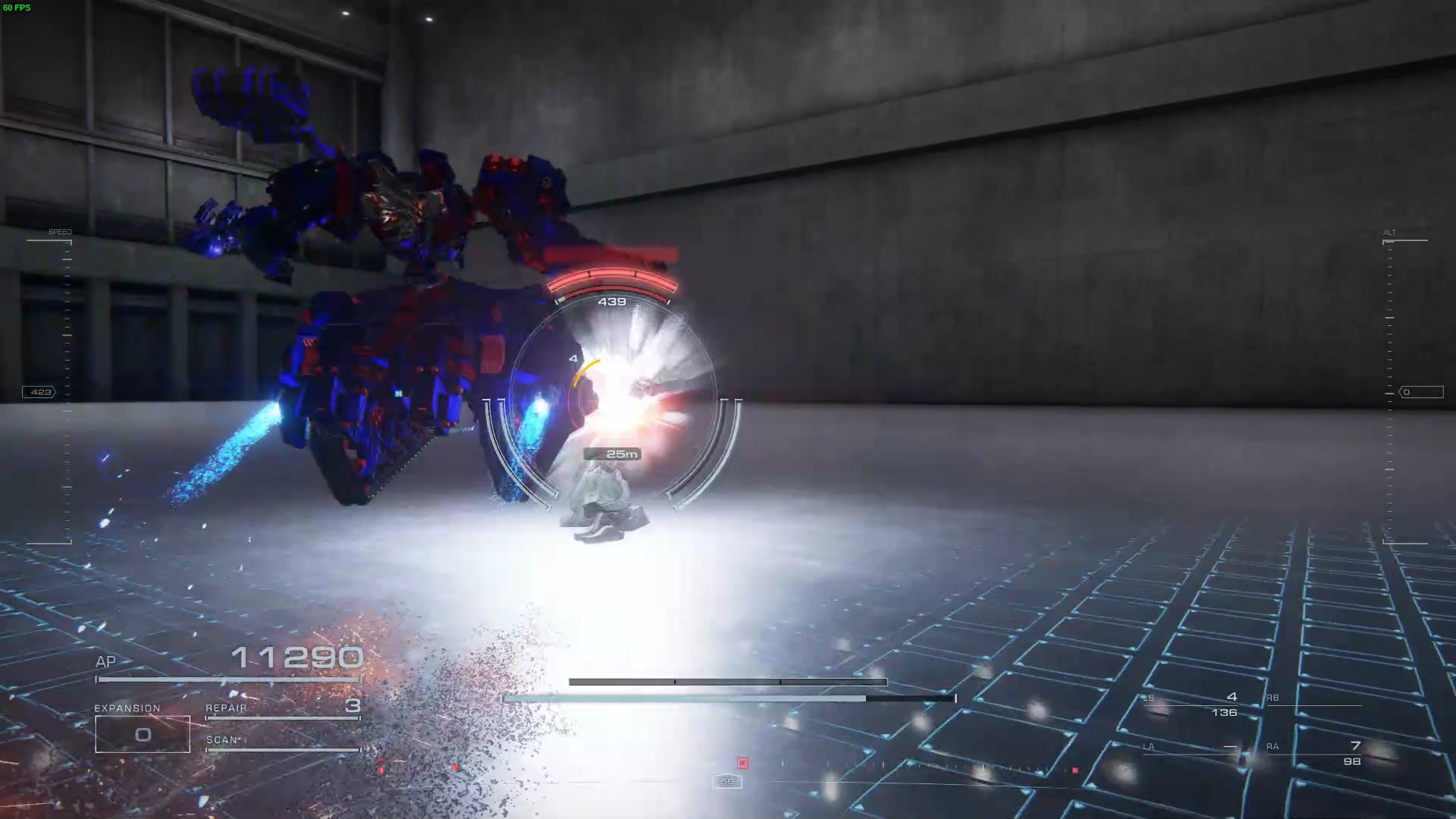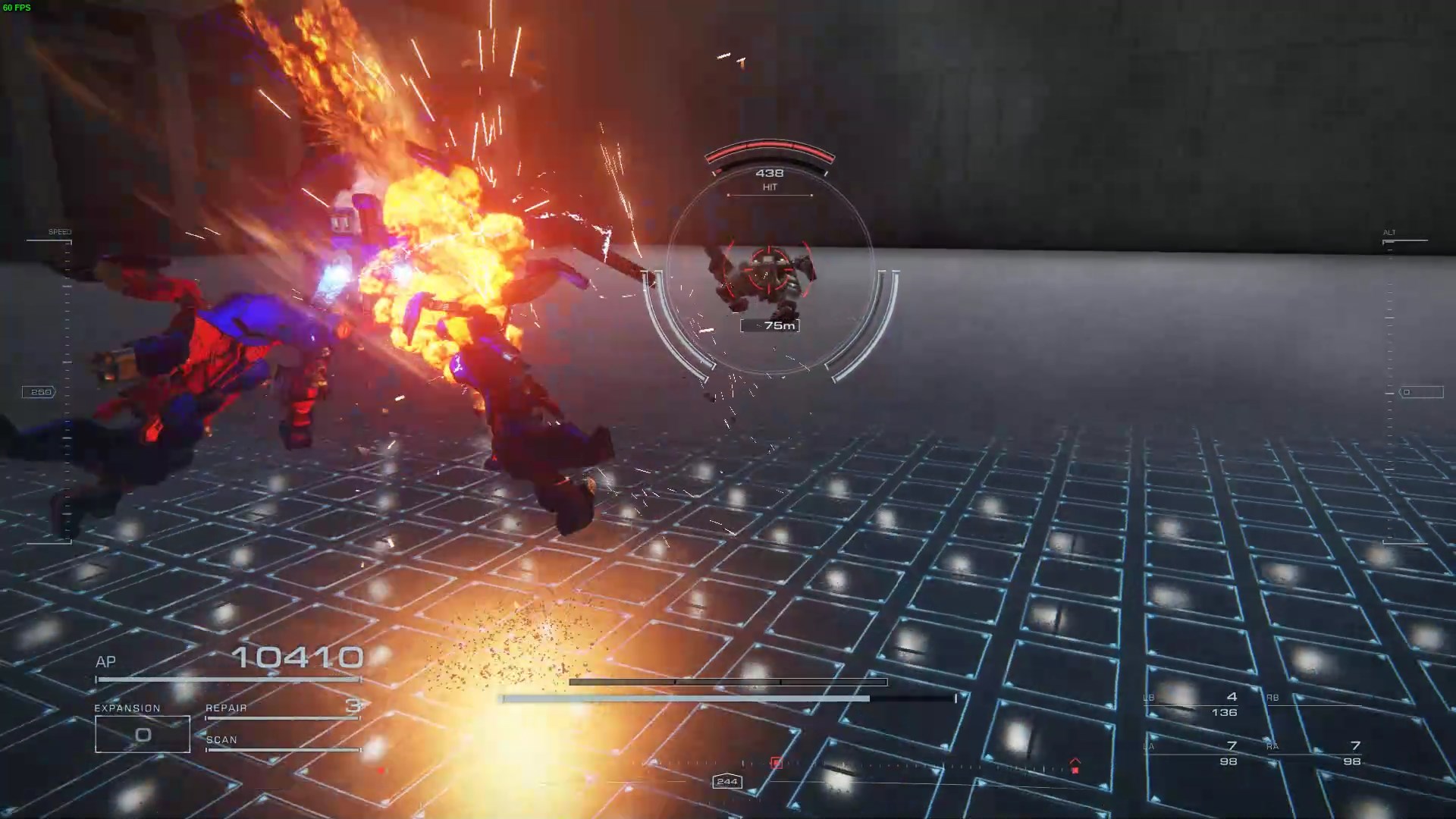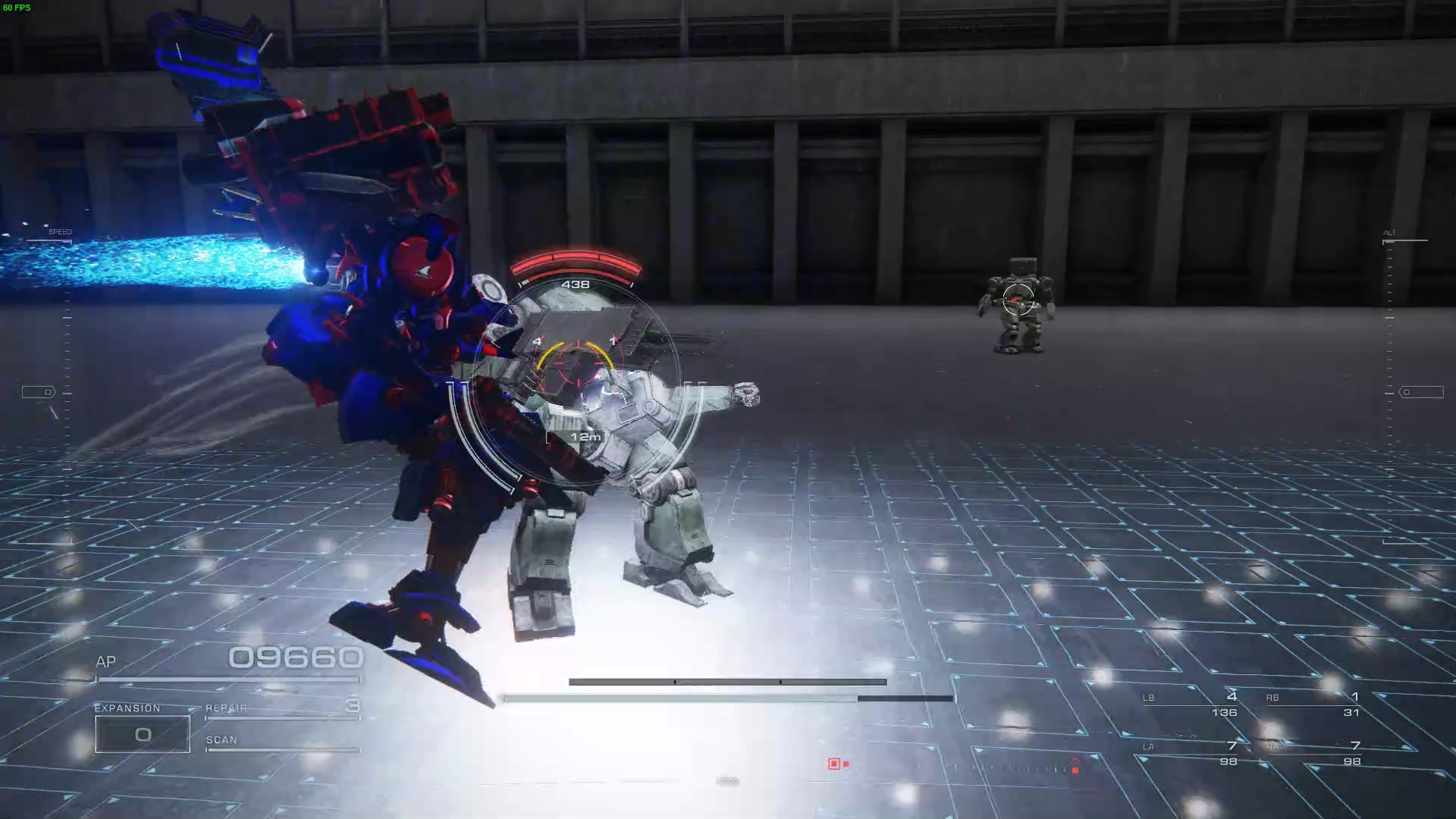The boost kick is one of the greatest things in the game. Here’s the nitty gritty on the numbers.
Basics
It’ll cost you 1 Credit in the OS Tuning menu to unlock this ability.
Be careful because this will open you up to the possibility of mis-clicking on occasion if you accidentally double-tap the Assault Boost button. You’ll flying kick towards whatever you’re locked on to instead of boosting away like you wanted.
The base damage your kick does is dependent on two things:
- the Total Weight of the AC. By the way, this means if you use the Weapon Control ability and purge a weapon mid-mission your kick will do slightly less damage until you reach a Supply Sherpa and get it back.
- the class of leg you have equipped, more specifically: Is it reverse joint or not?
All legs within a class behave the same way. All else being equal, the speedy wheelchair tank legs do the same kick damage as the big slab tank legs. The spindly Nachtreiher will not do less kick damage than a chonky Tian-Qiang boot if the ACs are the same weight.
Assault Boosting to full speed first, i.e. taking a running start, does not do more damage than a point blank jump kick. If the enemy is right in front of you, just double-press and whip it out.
The kick is extremely useful for saving ammunition especially on S rank attempts. One dynamic entry will kill many MTs instantly, if not it will stun them, especially if struck while Unaware. Failing all that it will at the very least make them stumble.
Even without filling the stagger meter, some larger enemy animations can be interrupted with a kick! This is particularly useful against tetrapod MTs charging their main weapon. Kicking an enemy suffering ACS Failure will do 3x kick damage AND often seems to extend the stagger window somewhat.
There is a brief post-kick lethargic period where you are slowed and your camera movement stiffens so beware of that. Obviously try not to miss.
Damage, some quick gathered numbers
By the way, the new AC Test mode is leagues better than what I had in the PS1 days. You can swap parts without leaving the mode! Amazing.
Tank treads, tetrapod (aka quads), and bipedal legs all have the same modifier. Yes, that’s right. Tank kicks do NOT do more damage inherently. They just “usually” do because tank ACs are heavier. (Otherwise why are you using tank legs?)
Reverse joint legs do a good bit more damage.
Tank

- Weight: 66240
- Damage: 439
Quad

- Weight: 66230
- Damage: 438
Reverse

- Weight: 66230
- Damage: 526
Bipedal

- Weight: 66230
- Damage: 438
That extra 100 is pretty good, especially if you factor in the x3 bonus you’ll get from kicking a Staggered enemy.
Range/Distance
All of the leg classes CAN hit multiple enemies at once if they are bunched together close enough. It is easiest to do this with the tetrapod because the AC will do a helicopter spin, greatly increasing the size of the hurtbox, even more than the big slab tank treads. I do not think you can hit an enemy more than once in a single kick action though even if you pin them in a corner.
Since it is a boost kick you can’t avoid having to boost first.
- Bipedal and Tank kicks will boost and hit at 100m from target.
- Quads will hit within 110m, seems to be merely because of the way the legs splay out as you twirl. It’s a negligible difference.
- Reverse joints will reach just under 120m(!). That’s slight too but it can make a difference, I guess.
Against anything that isn’t stationary though, this is a wash.
Notably, the quad and tank kicks will cause the AC to keep some forward momentum after the strike point at ~100m without consuming further energy. This can be ‘abused’ to cross over large chasms and voids by spamming Boost Kick rather than attempting a normal Assault Boost.


